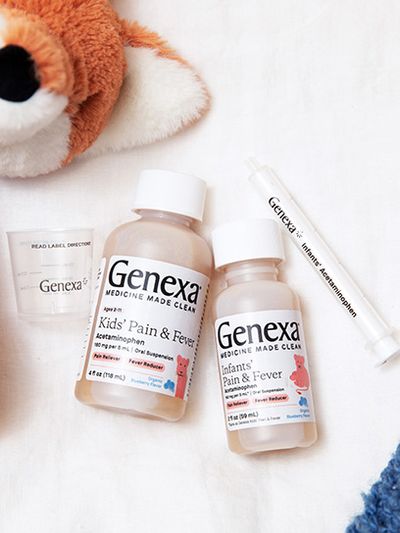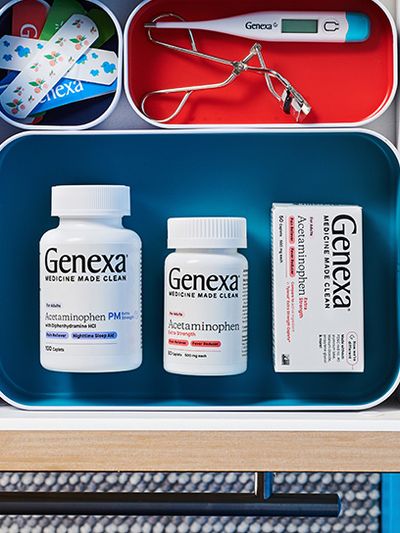How To Manage Allergic Reactions And Rashes
Symptom Management For Allergic Reactions
Table of contents:
Allergies occur when your immune system overreacts to a certain substance and perceives it as a threat. Pollen, bee venom, pet dander, and certain foods are all common sources of allergic reactions, yet these substances do not cause a reaction in all people.
It is still unknown why certain people have allergic reactions to substances while others do not, and the severity of allergies and allergic reactions can vary from person to person. For some, an allergic reaction can cause symptoms that are mildly uncomfortable, but for other people a reaction can be life threatening. Severe and life-threatening allergic reactions are known as anaphylaxis, and these reactions require prompt treatment.
There are many different ways to find relief from allergic reactions and rashes, but the proper method of treatment very much depends on the kind of reaction being experienced, as well as how severe it is.
Severe reactions require emergency medical attention, whereas minor allergic reactions may be managed through the use of over-the-counter antihistamines. Different types of allergies can cause different symptoms, and the exact symptoms you experience may vary from case to case.
However, learning about some of the most common symptoms of different allergies may help you more easily recognize an allergic reaction when it starts, which will allow you to find relief more quickly.
Understanding Allergic Reactions
Before getting into methods of finding relief from allergic reactions and rashes, it is important for you to understand how allergic reactions work.
Your immune system is your body’s first line of defense against threatening invaders, and when you have an allergy to a certain substance, it means that your immune system perceives this substance as a threat when it enters your body, and then responds to it as such. This response entails the production and release of certain antibodies and chemicals that are ultimately responsible for the symptoms you experience during an allergic reaction, and these symptoms can affect your nose, throat, lungs, sinuses, ears, skin, and lining of the stomach.
There are several different types of allergies that you may want to become more familiar with:
- Hives are a common form of rash that may occur as part of an allergic reaction, and they appear as small itchy and red bumps on the skin that may occur in clumps and can either be big or small
- Asthma is a chronic lung disease characterized by coughing, chest tightness, shortness of breath, and wheezing, and an asthma attack causes the airways to narrow
- Food allergies can occur with any food, though some foods more commonly cause allergic reactions than others. Food allergies can be severe, and symptoms can occur immediately after a person comes into contact with a certain food
- Allergic rhinitis is characterized by nasal symptoms, such as runny nose and sneezing, that happen in response to an allergen such as dust, molds, or pollen
In cases that are more severe, an allergic reaction may start out as mild and then progress into anaphylaxis, or anaphylactic shock. When this occurs, it is essential for you to seek prompt, emergency medical attention.
Some common symptoms of certain allergic reactions include the following:
- Itchy and watery eyes, sneezing, an itchy nose, and a runny or stuffy nose in cases of hay fever
- Tingling or swelling of the mouth, swelling of the face or lips, hives, and anaphylaxis in cases of food allergies
- Itching, redness, and flaking or peeling of the skin in cases of skin reactions
Knowing the signs can help you identify and treat an allergic reaction more effectively.
Anaphylaxis: How To Spot It and What To Do
Learning how to identify a case of anaphylaxis could be the difference between life and death. Warning signs of anaphylaxis are generally widespread, meaning they can affect different parts of the body.
Symptoms of anaphylaxis can include:
- Rash or hives
- Swelling of the throat or other body parts
- Wheezing
- Loss of consciousness
- Difficulty breathing
- Vomiting
- Diarrhea
- Paleness or flushing of the face and body
- Feelings of impending doom
If you spot these symptoms in yourself or in someone close to you, you should call 911. Cases of anaphylaxis require a prompt injection of epinephrine, often called an EpiPen, as well as a trip to the emergency room for a medical evaluation.
Whenever you are experiencing a severe allergic reaction, the best way to manage it is to seek emergency medical help.
Allergic Reaction Rashes and Contact Dermatitis: Finding Relief
Allergic reactions that affect the skin are known as contact dermatitis, and they occur when your skin touches something that you are sensitive to.
For example, if you are allergic to one ingredient in a body lotion, and you apply the lotion to your skin, you may end up with a rash where the contact occurred.
In cases of contact dermatitis, it can take weeks for your rash or other symptoms to resolve, even with proper treatment.
However, you can manage skin reactions by doing the following things:
- Avoid or minimize your exposure to known allergens
- Use an anti-itch cream to soothe inflammation and itchiness
- Try an over-the-counter antihistamine when your symptoms first appear
- Apply a cold compress to the affected area of the skin
- Contact your doctor if your symptoms do not resolve or improve
If your skin is blistering, painful, appears to be infected, or is constantly itchy, you should call your doctor for advice on how to manage the symptoms.
Recognizing and Treating an Allergic Reaction
When it comes to food allergic reactions, it is important to know the difference between a mild and severe reaction, but you should also keep in mind that mild reactions may still progress into something more serious. Mild symptoms can include an itchy or runny nose, sneezing, an itchy mouth, hives, nausea, and stomach discomfort.
In cases of severe symptoms, you may experience dizziness, weakness, paleness or flushing, difficulty breathing, significant swelling of the tongue, throat, or lips, widespread hives, severe vomiting, and confusion.
For a severe reaction, you should use an epinephrine auto-injector and call 911 immediately. Even if you administer epinephrine, a medical evaluation is still necessary to make sure a second dose of epinephrine is not needed. In some cases, steroids may be administered to help ease inflammation that sometimes results from anaphylaxis. Steroids may also help prevent an anaphylactic reaction from coming back.
For mild reactions, you may use antihistamines to calm symptoms, and it is best to take antihistamines as soon as you begin to notice symptoms. If your symptoms or your child’s symptoms are not responding to antihistamines, it may be best to call your doctor in order to get professional advice.
Your doctor can help you learn more about other options when it comes to finding the right allergy medication, and you can also talk to them about any other questions or concerns you might have. Plus, if you or your child are having allergic reactions to something that has not yet been diagnosed, your doctor may refer you to an allergy specialist for allergy testing in order to figure out what is causing the reactions. Once you have identified the allergen, it will be easier to avoid it and thus prevent an allergic reaction.
The best method of prevention for any type of allergic reaction is to completely avoid the substance that you are allergic to, but accidents happen so it is best to always be prepared. If you have a history of severe reactions, you should carry your epinephrine auto-injector with you everywhere you go.
The Bottom Line
Allergic reactions and rashes can strike at any time, and may catch you by surprise if you were unaware that you accidentally came into contact with an allergen.
Some allergic reactions will only cause mildly uncomfortable symptoms, but other reactions can be life threatening. Anaphylaxis is a severe and life threatening allergic reaction that impacts the entire body, and cases of anaphylaxis require immediate medical attention.
Any time that you think you may be having an anaphylactic reaction, you should immediately use your epinephrine auto-injector and call 911. For minor allergic reactions, you can take antihistamines. If symptoms do not resolve, call your doctor for a professional opinion on what may be causing your symptoms.
In cases of rashes or hives, antihistamines and a cold compress may help soothe the skin, but it may still take weeks for the rash to fully resolve.







